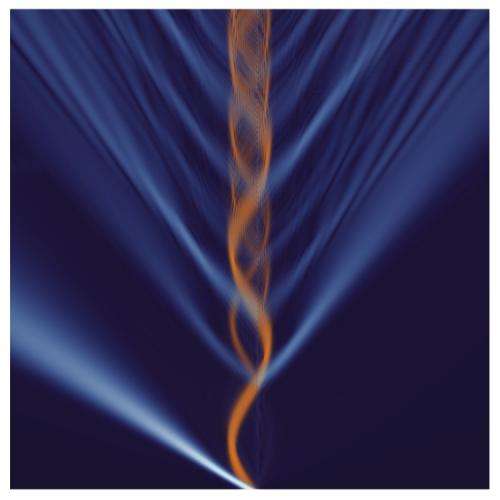September 8, 2014 report
Best of Last Week – New model for dark matter, Martian clouds and mind to mind conversing

(Phys.org) —Most of the big news in physics this past week came from astrophysicists, most notably Mikhail Medvedev—he's come up with a new model for dark matter, suggesting it's likely a new type of elementary particle that doesn't fit the standard model. He calls his new model "flavor-mixed multicomponent dark matter." Another team of space scientists discovered new clues for determining the solar cycle—little bright spots known as brightpoints my help better predict the personality change the sun undergoes approximately every eleven years. Space scientists also learned that the Milky Way galaxy is part of a truly massive supercluster of galaxies known as Laniakea—Hawaiian for "immense heaven."
In unrelated space news, Mars rover Curiosity snapped images of Martian clouds—two years on, the rover is currently driving toward some hills "to do some geology work & also search for clouds," NASA reported via Twitter. The agency also reported that it had successfully tested the most complex rocket parts ever designed, created using additive 3D printing.
In technology news, researchers in Virginia have developed a non-volatile type of memory that improves energy efficiency by two orders of magnitude—it's based on using voltage generated stress. Meanwhile a partnership between two research groups has resulted in producing the first graphene-based flexible display. It's still just a prototype, of course, but it does offer perhaps a glimpse of what might be coming to consumers sooner rather than later.
In completely unrelated news, a team working in Gibraltar has claimed that cave art was made by Neanderthals, which would make it the first known examples of Neanderthal rock art. Not everyone is as sure as they are. Also, researchers at the University of Manchester and King's College in the U.K. wonder—is type 2 diabetes really "diabetes" as it's currently understood? They suggest distinctions be made between diagnosing and treating the two types of the disease.
And finally, in a bit of science fiction meeting reality, a team of researchers has demonstrated direct brain-to-brain communication in human subjects. They hooked up volunteers in India and France with brain wave reading gear, then connected them together via the Internet. A volunteer on one side was asked to think of the words "hola" and "ciao" while a volunteer on the other end listened. The team reports that the person on the receiving end was able to "hear" what the other person thought. Where this might lead is anyone's guess but it most certainly opens the door to whole host of unanswerable questions.
© 2014 Phys.org





















